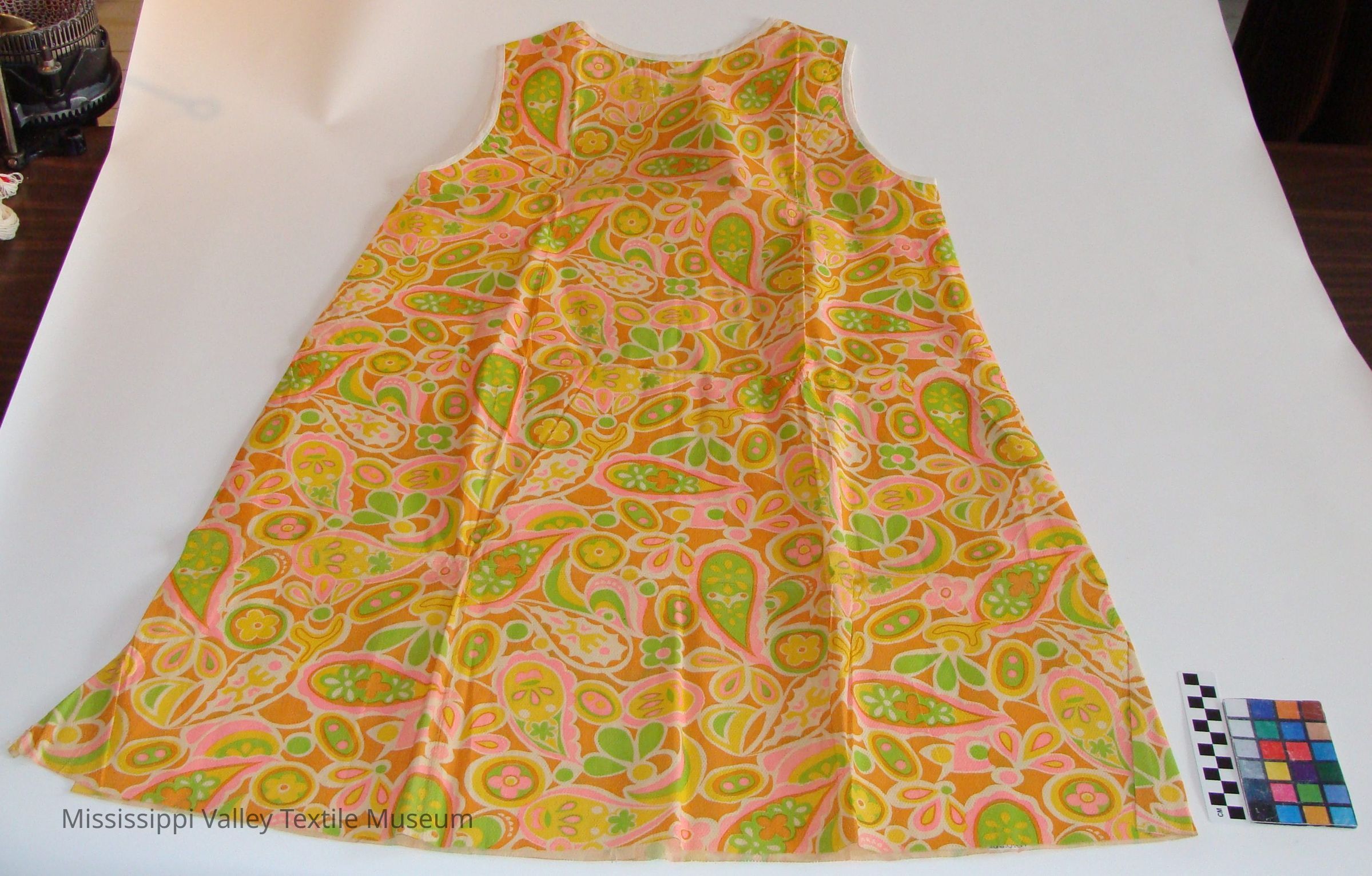Name/Title
Paper DressEntry/Object ID
2016.07.01Description
A 1960s paper dress.
An excerpt from a website describing the history of these dresses
(http://costumesociety.org.uk/blog/post/dare-to-tear-paper-fashions-in-the-1960s)
Dare to Tear: Paper fashions in the 1960s
The fashions of the 1960s have always been a favourite of mine, I love the wide spectrum of styles, shapes and colours used and how the 'freedom of fashion' really kicked off during this decade. Despite this, until recently I had only skimmed over the late 1960s trend of wearing clothing made out of paper. As the ethics of 'throwaway fashion' and other short lived 'fads' has been much debated over recent years, I decided to delve a bit deeper into these paper fashions.
Originally paper clothing had been created for use in hospitals for both staff and patients, creating hygienically disposable clothing in order to cut down laundry costs. However in 1966 American companies such as Hallmark and Scott Paper Company began producing paper dresses that used the same prints as their other paper products, specifically to promote their tissues, new throwaway tablecloths, party plates, cups and other paper tableware. [Image 1] All kinds of different promotional paper dresses were created, including being used for US presidential campaigns, beauty products, and food companies. Campbell's Vegetable Soup 'Souper' dress was inspired by Andy Warhol’s 1962 iconic artwork, 'Campbell's Soup Cans'. [Image 2]
Paper fashions quickly became popular in the fashion world, with designers such as Ossie Clarke and Celia Birtwell, Elisa Daggs, Poster Dress Ltd. and Wastebasket Boutique creating their own versions. These paper fashions were exciting, fun, and cheap, enabling the wearer to stay up to date with the newest prints and styles. Advancements in material technology enabled these garments to be made out of wood pulp mixed with synthetic fibres in order to create a more hard wearing paper like fabric that had water and fire resistant properties, and could be printed on easily. These fabrics required little maintenance and could be 'refreshed' by ironing inside out on a cool setting, some could even be washed, but the water and fire resistant finishes normally came off during the process.
In the true spirit of the space age, these dresses were even believed to be the prototypes for the future. Julian Tomchin went as far as to suggests that we would all be wearing paper fashions in the future as “After all who is going to do laundry in space?” (1). Elisa Daggs felt that paper fashions would continue to be fashionable and believed that “sealing machines will replace sewing machines” due to paper needing a different kind of “architecture” to fabric (2). These paper dresses were easily altered by the modern woman as they required no sewing skills, just a pair of scissors and glue or sticky tape.Collection
Clothing and accessories CollectionCataloged By
Fournier, SarahLexicon
Nomenclature 4.0
Nomenclature Primary Object Term
DressNomenclature Sub-Class
Main GarmentsNomenclature Class
ClothingNomenclature Category
Category 03: Personal ObjectsDimensions
Width
64 cmLength
90 cmDimension Notes
Width measured at widest spot in dressLocation
Location
Container
Box 3Shelf
Shelf 27Room
Collections RoomBuilding
M.V.T.M.Category
PermanentDate
November 7, 2023Location
Shelf
54, 54Room
Collections RoomBuilding
M.V.T.M.Date
February 20, 2017Notes
Reason: Awaiting storage
Notes: Plan is to go into an archival box 5, shelf 14Location
Container
1Shelf
15, 15Room
Collections RoomBuilding
M.V.T.M.Category
PermanentMoved By
Fournier, SarahDate
February 20, 2017Location
Container
Box 1Shelf
Shelf 20, Shelf 20Room
Collections RoomBuilding
M.V.T.M.Category
PermanentMoved By
Fournier, SarahDate
February 20, 2017General Notes
Note
Status: OK
Status By: Cotter, Ellen
Status Date: 2022-02-04Created By
admin@catalogit.appCreate Date
February 23, 2017Updated By
admin@catalogit.appUpdate Date
November 11, 2023
